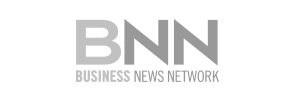Mining Newsletter FAQs
Q: What is the cost of a subscription to Resource Opportunities?
A: A one year subscription is $299; a two year subscription is $449 (the second year is half price!)
Q: How are Resource Opportunities newsletters sent?
A: Email.
Q: How many newsletters do I get with a subscription?
A: On average you will receive 2 issues a month. However Resource Opportunities releases a minimum 20 issues per year, so some months there may only be one issue.
Q: When are the newsletters sent out?
A: Most of the time newsletters are released within the first and last week of the month. However there is no set date of release date and this may not always be the case.
Q: What is an Interim Update?
A: An Interim update is a short and time sensitive write up that is sent only to email and fax subscribers. These updates are timely pieces explaining recent activity within a particular company or within the market.
Q: What if I have questions after reading one of your write ups?
A: Resource Opportunities welcomes questions from subscribers and potential subscribers, and can be contacted at james.kwantes@gmail.com.
Q: I am a subscriber and I think have missed a newsletter.
A: At the top corner of the newsletter you will see the volume and issue number. If it appears you are missing the next consecutive issue we encourage you to contact us. However, because newsletter release dates vary from month to month; it may seem that a few weeks have passed without a new issue. Feel free to contact our toll free number 1-877-773-7677; however the case may simply be that a current newsletter is still in the works.
Q: I have not received a newsletter since subscribing!
A: Every new subscriber receives a subscription confirmation either by email, mail or fax. This confirmation includes a receipt of your payment and a complimentary issue. Email and fax subscribers will receive a confirmation within no more than 2 business days. Mail subscribers generally receive their confirmation and first issue within a week.
If you did not receive a confirmation or have received a confirmation but haven’t seen an issue in over a month, please call 1-877-773-7677 or email james.kwantes@gmail.com and one of our representatives will immediately look into the problem.
Q: I get newsletters through email and can’t open the attachment.
A: There are several possible reasons you aren’t able to open the newsletter attachment. Here is a list of possibilities that may apply to you:
- Problem – When double clicking on the attachment icon, my computer attempts to open the newsletter but then states the document is “unreadable”. Solution – Your computer may not have the Adobe Reader program or may have an older version, which is not compatible with the format our newsletters are sent in. Downloading the correct software is free and easy and can be done at www.adobe.com. Once the program is installed try opening the attachment again.
- Problem – My email removes the attached newsletter saying it is an “unsafe attachment”. Solution – Each email address has a different security setting, some are set higher than others. From time to time simply requesting the issue be resent will prove successful and you will be able to open the newsletter. Other times you may need to contact your email provider to instruct you on how to open what is considered an “unsafe attachment”.
Don’t Miss a Single Issue: White List
Please White list Lawrence@resourceopportunities.com to ensure that you don’t miss any issues of Resource Opportunities.
Sometimes our newsletters are mistakenly blocked by Internet Service Providers (ISPs) as “spam” or unsolicited and unwanted e-mails because they are sent to multiple recipients at the same time. Spam has become such a big problem, that ISPs have put blocking and filtering systems in place to keep these messages out. However sometimes they inadvertently block messages that you want or have elected to receive from trustworthy senders.
The format of our e-mails sometimes causes them to be blocked or filtered out, and we believe this information is much too important for you to miss. One way to prevent this is to “white-list” us with your ISP by adding Lawrence@resourceopportunities.com to your e-mail address book and Safe List.
Instructions for the most popular ISPs
If your ISP is not among them, please check with your ISP to ensure that they understand that you requested and subscribed to these e-mails and you want to receive them.
To ensure that your issues are delivered to your Yahoo Inbox (not the Bulk Mail folder), you can instruct Yahoo to filter it to your Inbox. Here’s how:
- Open your Yahoo mailbox.
- Click Mail Options.
- Click Filters.
- Next, click Add Filter.
- In the top row, labeled From header:, make sure contains is selected in the pull-down menu.
- Click in the text box next to that pull-down menu, then enter Lawrence@resourceopportunities.com
- At the bottom, where it says Move the message to: select Inbox from the pull-down menu.
- Click the Add Filter button again.
If you are using Hotmail, you can ensure that your issues are delivered to your Inbox by adding Lawrence@resourceopportunities.com to your Safe List. Here’s how:
- Click the Options tab.
- Select Safe List. (It’s under the heading Mail Handling.)
- In the space provided, enter Lawrence@resourceopportunities.com.
- Click Add.
- When you see the address you entered in the Safe List box, click OK.
If you’re using AOL, you can ensure that your issues are delivered to your Inbox by setting your Mail Controls. Here’s how:
- Go to Keyword Mail Controls.
- Select the screen name we’re sending your issues to.
- Click Customize Mail Controls For This Screen Name.
For AOL version 9.0: You need to add our sending address to your “People I Know” list. Here’s how:
Open your latest e-mail from us.
Click the Add Address button (over on the right) to add to your “People I Know” list.
For AOL version 8.0: Select Allow email from all AOL members, email addresses and domains.
- Click Next until the Save button shows up at the bottom.
- Click Save.
For AOL version 7.0: In the section for “exclusion and inclusion parameters”, include Lawrence@resourceopportunities.com
If you’re using GMail, you can ensure that your issues are delivered to your Inbox simply by adding Lawrence@resourceopportunities.com to your Contacts List. Here’s how:
- Open your GMail mailbox.
- Click Contacts on the left navigation bar.
- Click the top left icon to add New Contact.
- Enter Lawrence@resourceopportunities.com in the e-mail address field on the right side of the screen.
- Click Save.
If you’re using AIM mail, you can ensure that your issues are delivered to your Inbox by adding Lawrence@resourceopportunities.com to your Contacts list. Here’s how:
- Open your AIM mailbox.
- Click Contacts on the left navigation bar.
- Click New and New Contact to add a new contact.
- Enter Lawrence@resourceopportunities.com in the e-mail address field.
- Click Create.
Other Email Applications
Many popular e-mail programs, including Outlook, Outlook Express, Eudora, and Netscape Mail, don’t provide a convenient way for you to white-list the addresses of the people you want to receive e-mail from. If you’re using this sort of e-mail system and you either aren’t getting your issues or want to make sure you continue to receive them in the future, you can do the following:
Contact the customer service people or the Postmaster at the company that provides your e-mail or Internet connection (your ISP). Explain to them that these are items you requested, that you subscribed to and value these e-mails and want to receive them.
Ask them how you (or they) can get them white-listed. They’ll need to know the following about us.
- Our Sending Address: If they ask for our address, give them
Lawrence@resourceopportunities.com
- Our Domain: If they need to know the domain we’re mailing from, tell them
- Our IP Address: If they ask for our sending IP address, tell them they are from the following two networks: 69.20.239.62
Add a name to your Safe Senders or Safe Recipients List
You can add either the sender’s e-mail address or their domain name to the Safe Senders List.
On the Tools menu, click Options.
On the Preferences tab, under E-mail, click Junk E-mail.
Click the Safe Senders or Safe Recipients tab.
Click Add.
In the Enter an e-mail address or Internet domain name to be added to the list box, enter the name or address you want added, and then click OK.
Repeat steps 4 and 5 for each name or address that you want to add.
Notes:
If you want your Contacts to be considered safe senders, select the Also trust e-mail from my Contacts check box on the Safe Senders tab. All e-mail addresses in your Contacts folder will then be used by the Junk E-mail Filter to evaluate messages.
If you want people who are not necessarily in your Contacts but are people you correspond with regularly to be considered safe senders, select the Automatically add people I e-mail to the Safe Senders List check box on the Safe Senders tab. By default, the check box is selected. This check box is introduced with Microsoft Office 2003 Service Pack 1. To get Service Pack 1, go to Downloads on Office Online. Under Office Update, click Check for Updates.
If Automatic Picture Download is turned off, messages from or to e-mail addresses or domain names on the Safe Senders and Safe Recipients Lists will be treated as exceptions and the blocked content will be downloaded.
If you have existing lists of safe names and addresses, you can import the information into Microsoft Office Outlook 2003 by saving the list into a text (.txt) file with one entry per line, and then importing the list.
To quickly add a sender, domain name, or mailing list name to the Safe Senders or Safe Recipients Lists, right-click the message you consider safe, and then on the shortcut menu, point to Junk E-mail, and then click Add Sender to Safe Senders List, Add Sender’s Domain (@example.com) to Safe Senders List, or Add Recipient to Safe Recipients List.
If you are using a Microsoft Exchange Server e-mail account, names and e-mail addresses in the Global Address List are automatically considered safe. (The Global Address List is the address book that contains all user, group, and distribution list e-mail addresses in your organization. The administrator creates and maintains this address book. It may also contain public folder e-mail addresses.)
If you are using an Exchange Server e-mail account and working online, you must be using Microsoft Exchange Server 2003 or later. If you do not know what version of Exchange server your e-mail account is using, contact your Exchange administrator.
 James Kwantes is the editor of Resource Opportunities, a subscriber supported junior mining investment publication. Mr. Kwantes has two decades of journalism experience and was the mining reporter at the Vancouver Sun. Twitter:
James Kwantes is the editor of Resource Opportunities, a subscriber supported junior mining investment publication. Mr. Kwantes has two decades of journalism experience and was the mining reporter at the Vancouver Sun. Twitter:  Resource Opportunities (R.O.) is an investment newsletter founded by geologist Lawrence Roulston in 1998. The publication focuses on identifying early stage mining and energy companies with the potential for outsized returns, and the R.O. team has identified over 30 companies that went on to increase in value by at least 500%. Professional investors, corporate managers, brokers and retail investors subscribe to R.O. and receive a minimum of 20 issues per year. Twitter:
Resource Opportunities (R.O.) is an investment newsletter founded by geologist Lawrence Roulston in 1998. The publication focuses on identifying early stage mining and energy companies with the potential for outsized returns, and the R.O. team has identified over 30 companies that went on to increase in value by at least 500%. Professional investors, corporate managers, brokers and retail investors subscribe to R.O. and receive a minimum of 20 issues per year. Twitter: 
